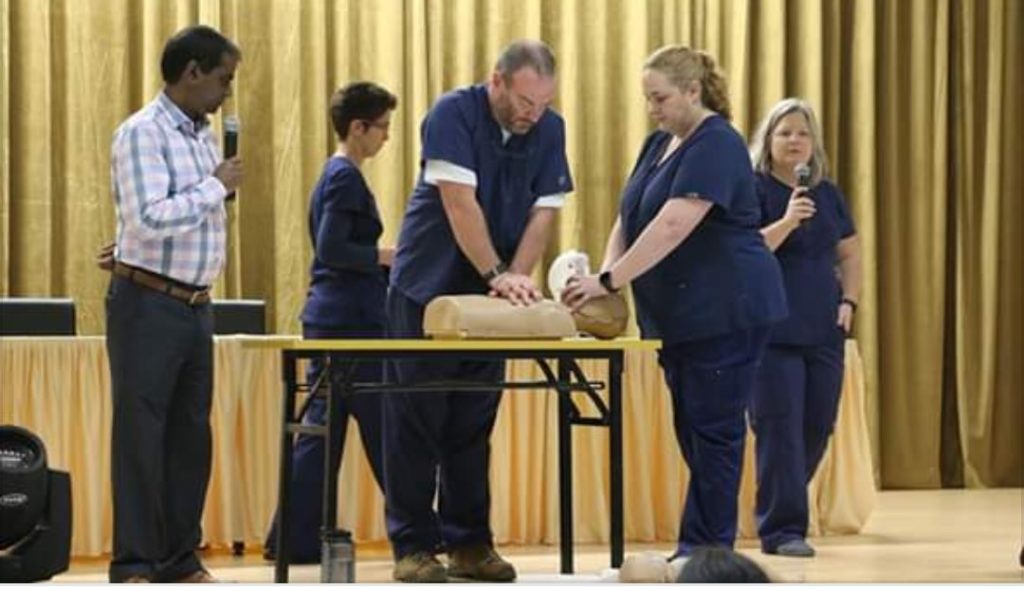We woke Wednesday morning ready to go, and the first day of teaching went well. Although we started 30 minutes late and a 15 minute break turned into 30 (we had to break for tea), the students were well prepared and eager to learn.
In the States, most hospitals are transitioning to either what’s called RQI or web-based eLearning to teach CPR. These course significantly reduce the amount of time actual instructors need to be present. Outside the US though, courses are mostly instructor-led, meaning an instructor is facilitating the learning for the entire class. As I work outside the US and was the only instructor who had recent experience teaching this way, I initially took lead.

On Thursday we only started 15 minutes late. Overnight though I developed a cold, slept terribly and became very hoarse. I felt awful but powered through the course. What was great was how all the instructors, although we had never taught together and had only known each other for a few days, flowed and backed each other up. If I missed a key point, another instructor would seamlessly pipe in and ensure the information was conveyed.

I chalk this rhythm up to several things. First, we know our stuff. To a tee, every instructor was well prepared and confident in their ability to teach and their mastery of the subject. Second, we were clear on the mission. Our goal was to impart as much information as we could and there was no question why we were there. Third, nobody had an ego. Although we were confident, we were also experienced enough to know we didn’t know it all and deferred to each other when another instructors’ experience may be called for. Some of us were experienced in pediatrics, others in critical care, newborn resuscitation or emergency medicine. We would bounce off each other and it made for a fluid and dynamic class.

In any case, that evening I crashed by 8pm and slept the best I had the whole trip. I woke in the morning still hoarse and coughing but feeling better.
Friday went great and even our missing equipment finally arrived. When it was all said and done, because a few students missed class over the 3 days, we were able to certify 49 students in Basic Life Support.

The greatest trouble students had revolved around language. We had an interpreter with us for all 3 class days but even so, the students command of English was pretty good. Students got tripped up on certain words so we learned real quick to speak deliberately and avoid jargon or slang which may be unfamiliar. Although it was us who should’ve been apologizing, some students, if they performed poorly on the written exam, would apologize for not reading English better. Using the interpreter, once it was translated, they almost always knew the right answer. Clearly they were the most well prepared group of students I’d ever taught.
On Friday evening we conducted a public health event where we taught community doctors and nurses the value of CPR. There’s a significant misunderstanding about CPR within Bangladesh, such as it hurts the patient and causes death, and one of our goals was to dispell some of those myths.

While part of the team conducted this presentation, two of our Advanced Cardiac Life Support (ACLS) instructors held a mock code in one of the ICU’s. These two events helped lay the foundation for future CPR courses in the Bangali community and more advanced courses such as ACLS.


